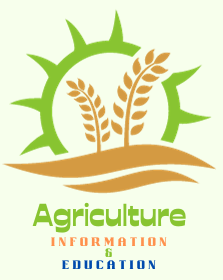Table of Contents
ToggleIntroduction:
Sustainability in agriculture is a comprehensive approach aimed at meeting the needs of the present without compromising the ability of future generations to meet their own needs. This introduction serves as a foundation for understanding the multifaceted nature of sustainable cropping systems and farming practices, emphasizing the interconnectedness of ecological, economic, and social considerations. As the world grapples with challenges such as climate change, population growth, and resource scarcity, the importance of adopting sustainable agricultural practices becomes increasingly apparent.
Environmental Stewardship:
Soil Health
Central to sustainable farming is the concept of soil health. Healthy soils are vital for supporting plant growth, nutrient cycling, and overall ecosystem functioning. Sustainable cropping systems prioritize soil conservation and enhancement through various practices. Cover cropping involves planting specific crops during fallow periods to prevent soil erosion, improve soil structure, and add organic matter. Crop rotation is another technique that helps break pest cycles, improve soil fertility, and reduce the risk of soil-borne diseases. Additionally, minimal tillage methods are employed to conserve soil structure and minimize disruption to the natural ecosystem.
Water Conservation:
Water scarcity is a global concern, and agriculture is a major consumer of water resources. Sustainable cropping systems incorporate water conservation practices to optimize water use efficiency. Precision irrigation, including techniques such as drip and micro-irrigation, minimizes water wastage by delivering water directly to the root zone of plants. Rainwater harvesting is another sustainable practice that involves collecting and storing rainwater for agricultural use. These strategies not only contribute to the sustainable use of water but also mitigate the environmental impact of excessive water extraction.
Biodiversity Conservation:
Crop Diversity
Monoculture, or the cultivation of a single crop over large areas, poses risks to agricultural systems. Sustainable farming practices promote crop diversity as a strategy to enhance resilience and reduce vulnerability to pests and diseases. Intercropping, where two or more crops are cultivated together, and crop rotation, which involves growing different crops in sequential seasons, are practices that contribute to increased biodiversity within farming systems. The presence of diverse crops not only safeguards against production risks but also supports ecosystem services such as natural pest control and soil health.
Habitat Preservation
Beyond crop diversity, sustainable farming involves the preservation of natural habitats within and around farms. This includes maintaining hedgerows, riparian zones, and other natural features that provide habitats for beneficial insects, birds, and other wildlife. By creating and preserving these habitats, farmers contribute to overall biodiversity conservation and ecosystem health. This integrated approach recognizes the interconnectedness of agricultural landscapes with the broader environment.
Resource Efficiency:
Energy Use
The efficient use of energy is a key consideration in sustainable cropping systems. Traditional agricultural practices often rely heavily on non-renewable energy sources. Sustainable farming seeks to minimize energy consumption and transition towards renewable energy alternatives. The adoption of solar-powered equipment, energy-efficient machinery, and the optimization of energy use in irrigation systems are examples of practices that contribute to resource efficiency in agriculture.
Input Efficiency
Sustainable farming emphasizes the judicious use of inputs such as fertilizers and pesticides. Excessive use of these inputs can lead to environmental pollution, soil degradation, and negative impacts on biodiversity. Sustainable practices involve precision farming techniques that tailor input application to the specific needs of crops. This not only reduces the environmental footprint of agriculture but also contributes to cost savings for farmers.
Economic Viability:
Profitability
For sustainable farming practices to be widely adopted, they must be economically viable for farmers. Enhancing productivity while reducing production costs is a central goal. Sustainable practices, such as organic farming and agroecological approaches, aim to achieve profitability through methods that prioritize long-term sustainability over short-term gains. By improving soil health, reducing input costs, and adopting efficient technologies, farmers can achieve economic viability while contributing to environmental stewardship.
Market Access
Economic sustainability is closely linked to market access. Sustainable farming practices need to be integrated into markets that value and support environmentally friendly and socially responsible agriculture. Access to fair and diverse markets ensures that farmers receive just compensation for their efforts, providing stability and resilience in the face of market fluctuations. Initiatives that promote direct relationships between farmers and consumers, such as farmers’ markets and community-supported agriculture (CSA), play a role in fostering sustainable market connections.
Social Responsibility:
Community Engagement
Sustainable agriculture extends beyond the farm gate and involves engagement with local communities. Collaboration between farmers, local residents, and community organizations fosters knowledge exchange, builds trust, and creates a sense of shared responsibility. Sustainable farming practices often involve educational outreach, workshops, and partnerships with community groups to promote a deeper understanding of the environmental and social benefits of sustainable agriculture.
Labour Practices
Social responsibility in sustainable agriculture includes ensuring fair and ethical labour practices. Farmworkers play a crucial role in food production, and their well-being is integral to the overall sustainability of the agricultural sector. Sustainable farms prioritize safe working conditions, fair wages, and opportunities for skill development. Recognizing and valuing the contributions of farmworkers is a key aspect of social sustainability.
Adaptability and Resilience:
Climate ResilienceClimate change poses significant challenges to agriculture, including shifts in temperature patterns, altered precipitation regimes, and an increased frequency of extreme weather events. Sustainable cropping systems aim to enhance resilience to these changes. This involves the selection of climate-resilient crop varieties, the implementation of water management strategies, and the adoption of adaptive measures such as agroforestry and agroecological practices.
Risk ManagementSustainable farming recognizes the inherent uncertainties in agriculture and incorporates risk management strategies. Diversification is a key approach, involving the cultivation of a variety of crops, the integration of livestock, or the inclusion of non-agricultural activities on the farm. Diversified farming systems are more resilient to external shocks, providing a buffer against the impacts of weather variability, market fluctuations, and other uncertainties.
Continuous Improvement:
Innovation
Sustainable agriculture is not a static concept but rather a dynamic and evolving approach that embraces ongoing research and innovation. Agricultural research institutions, farmers, and technology developers collaborate to identify and implement new technologies, farming practices, and management approaches. Innovations may include precision farming technologies, agroecological practices, and advancements in sustainable water management. The continuous pursuit of improvement ensures that sustainable farming practices remain at the forefront of addressing emerging challenges.
Conclusion:
In conclusion, sustainable cropping systems and farming practices represent a holistic and integrated approach to agriculture that considers the interdependence of ecological, economic, and social factors. The principles discussed, from environmental stewardship and biodiversity conservation to resource efficiency, economic viability, and social responsibility, collectively contribute to the overarching goal of sustainability. As the global community navigates the complexities of the 21st century, embracing and advancing sustainable agriculture is not just a choice but a necessity for securing a resilient and sustainable future for food production and environmental well-being. The principles outlined provide a roadmap for farmers, policymakers, and stakeholders to collaborate in creating a more sustainable and regenerative agricultural system.


Concept is very good need to practice from all side,